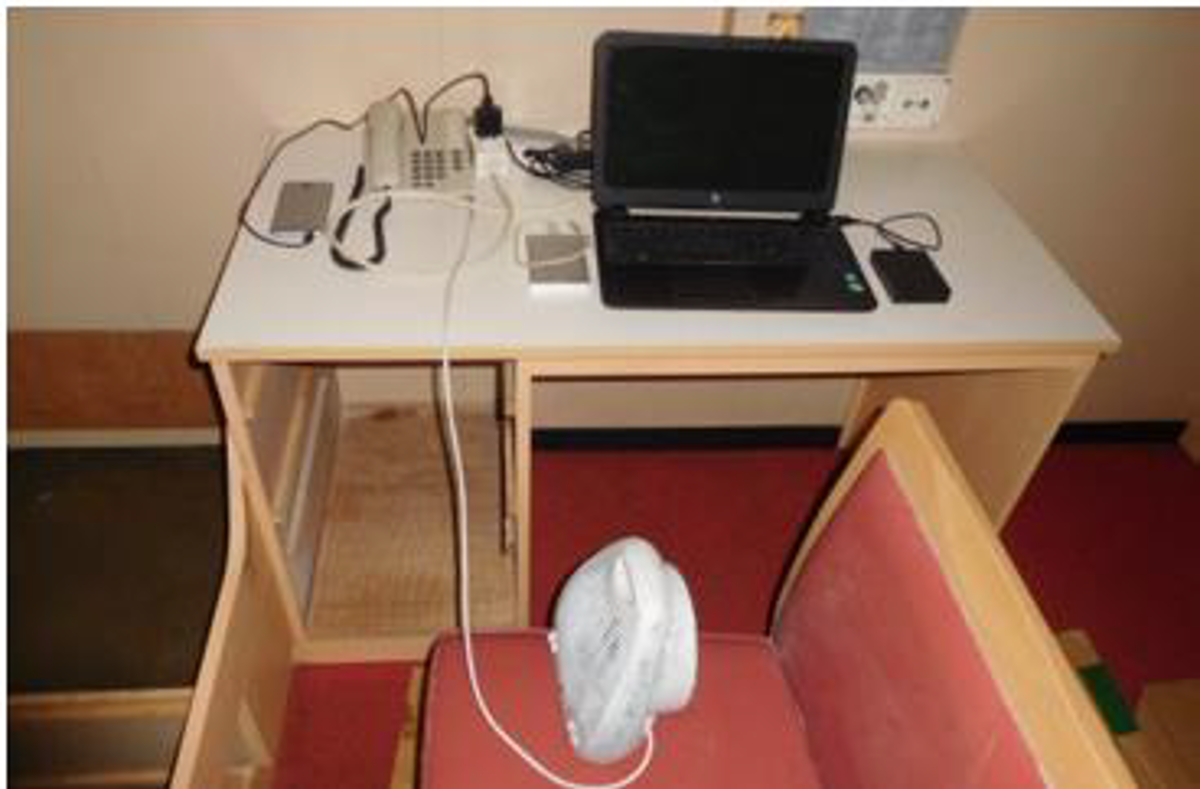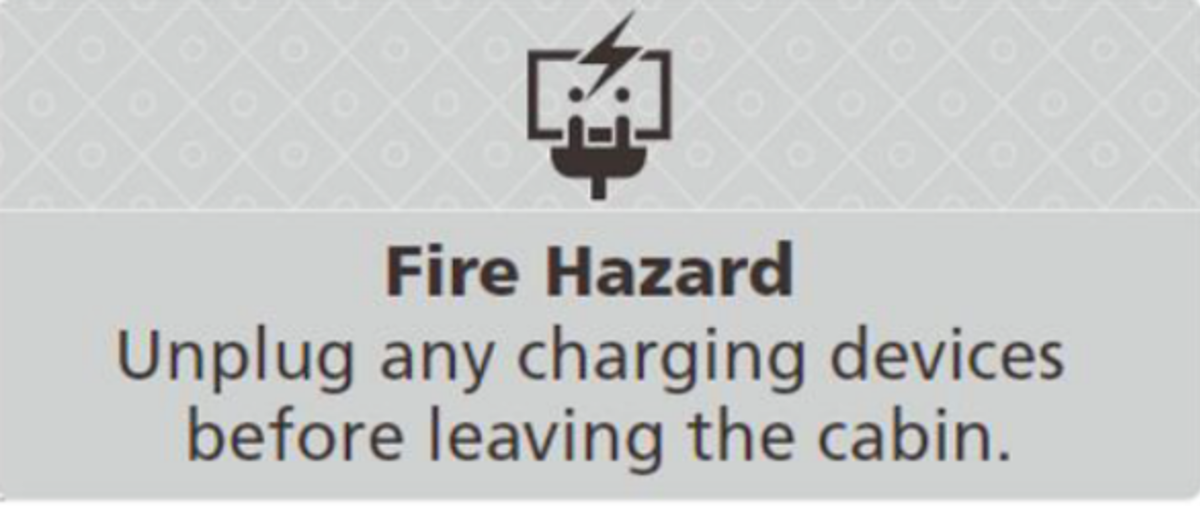Fire in the accommodation: electronic items in cabins
- Safety Flash
- Published on 23 August 2018
- Generated on 12 December 2025
- IMCA SF 18/18
- 4 minute read
Jump to:
An incident occurred on board a vessel which almost escalated into a serious accommodation fire.
What happened?
A crew member finished his work for the day and returned to his cabin. He plugged his mobile phone into an extension cable to charge; also plugged into the extension cable was a fan heater. He then proceeded to his bathroom to wash.

Layout of Desk within the cabin
Shortly afterwards the ship’s fire detection system indicated alarms in adjacent cabins. At the same time, another crew member activated a manual call point in the alleyway having discovered smoke. The ship’s alarm bells were sounded, and announcements made for fire teams to muster.
The crew member emerged from his bathroom to find his cabin filled with smoke and a fire on the desk; both the cabin telephone and extension cable were burning. The crew member attempted to extinguish the fire by hitting it with a pillow, at this point the cabin telephone exploded and fragments fell onto the mattress, starting a second fire. The crewmember left his cabin.
Once the electricity had been isolated, the fire was extinguished with fire hoses before it could escalate further.
Investigation noted that:
- There was no evidence of any power surge on the vessel power supply prior to the fire.
- All crew involved had signed safety management system (SMS) familiarisation forms, including initial actions upon discovering fire.
- This class of vessel has wall mounted fixed heaters in the cabins from build.

What went wrong?
- There was no control of personal electronics onboard; there was no testing of portable appliances (whether personal items or company supplied items) before use.
- Initial reports suggested that the cabin telephone had caught fire independently of any other electronics, until reconstruction of the setup was requested and revealed the extension cable and fan heater. This seriously hampered the investigation process.
Our member noted that events of this sort involving portable electronic equipment have become more common in recent years.
What were the causes?
- Electrical equipment was not used properly:
- there was overloading of an extension cable/multiplug.
- a number of electrical items (including high powered items) were plugged in and left unobserved.
- heaters, fans and extension cables/multiplugs were bought locally by vessel crew from different sources, with no quality control check in place.
- There was poor housekeeping:
- the heater was placed on the chair and electronic equipment all laced together along with wires and extension cables on the desk.
- The vessel air conditioning and heating equipment were not being used for controlling cabin temperature.
- The initial reaction of the crew member to attempt to smother the fire with a pillow caused the fire to spread and become more serious.
The following causal factors were identified:
- Inadequate procedures:
- no control procedure or testing requirement was in place for personal electronic equipment brought onboard.
- no requirement for warning signs/information within cabins.
- insufficient information in company training material with regard to the dangers of overheating electronic devices and good housekeeping.
- high powered electrical fan heaters were introduced to cabins without a management of change (MoC) process or risk assessment.
- heaters and fans were bought locally by vessel crew from different sources with no quality control check in place.
- Inadequate leadership:
- when issues with vessel’s air conditioning and heating systems affecting cabin temperatures were previously reported, onboard management introduced additional equipment rather than solving the issues.
The root causes our member identified were:
- Failure to comply: the risk involved was seen as tolerable, and there was lack of awareness of safety.
- Internal company management systems were not sufficiently robust.
What actions were taken? What lessons were learned?
- Add requirement for PAT testing to vessel SMS and planned maintenance system (PMS).
- Implement more appropriate control of personal electronic equipment on board.
- Investigate and repair vessel air conditioning to ensure that accommodation temperature control using fixed vessel equipment is achievable.
- Post appropriate warning signs by sockets in cabins.
- Retraining and refamiliarization of crew on fire prevention on electrical equipment, raising the alarm and electrical safety in general.

IMCA considers that fires arising from inappropriate management of personal electronic items, particularly those with Lithium batteries, is a potentially serious and growing risk.
Related Safety Flashes
-
IMCA SF 27/17
25 October 2017
-
-
IMCA SF 24/16
20 September 2016
-
IMCA SF 16/16
27 June 2016
-
IMCA SF 16/08
30 October 2008
-
IMCA SF 10/07
20 December 2007
IMCA Safety Flashes summarise key safety matters and incidents, allowing lessons to be more easily learnt for the benefit of the entire offshore industry.
The effectiveness of the IMCA Safety Flash system depends on the industry sharing information and so avoiding repeat incidents. Incidents are classified according to IOGP's Life Saving Rules.
All information is anonymised or sanitised, as appropriate, and warnings for graphic content included where possible.
IMCA makes every effort to ensure both the accuracy and reliability of the information shared, but is not be liable for any guidance and/or recommendation and/or statement herein contained.
The information contained in this document does not fulfil or replace any individual's or Member's legal, regulatory or other duties or obligations in respect of their operations. Individuals and Members remain solely responsible for the safe, lawful and proper conduct of their operations.
Share your safety incidents with IMCA online. Sign-up to receive Safety Flashes straight to your email.